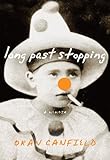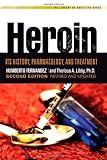Know About Heroin Abuse
Heroin is a semi-synthetic opioid manufactured from morphine. This drug is originally extracted from the seed of opium poppy plant, and uses as both painkiller and recreational drug. It is illegal to manufacture and to sell in the U.S., but in some countries, it is legally prescribed drug. According to National Survey on Drug Use and Health 2007, 3.8 million Americans of age 12 or older have abused heroin at least once in their life. Heroin affects cells functioning in central nervous system.
How it is abused?
Heroin is a highly addictive drug in U.S., and its abuse has many adverse consequences on the health of the abuser. According to National Survey on Drug Use and Health 2007, 1.06 millions Americans of age 12 or older had abused heroin first time in their life in 2006. Heroin is available in form white or brown color powder and it is smoked, injected, or snorted. Depending on abuser’s preference, and purity of the drug, abuser can abuse heroin in any form.
Through injection, the drug is released directly into bloodstream. Heroin enters into blood through nasal tissues if sniffed. With smoking of heroin, it directly passed through lungs. Regular abusers inject this drug minimum four times a day. Injecting this drug into body is the predominant method of abusing. Frequent abuse of this drug can quickly leads to addiction. Abstaining from heroin much quicker than any other opioids, it is possible within 4 to 5 weeks if the abuser wants to overcome.
Harmful effects of Heroin
Many risks are involved in heroin abuse. Infection in the body is the common effect of drug abuse. According to National Survey on Drug Use and Health 2006, 2.45 million abusers received treatment only for heroin abuse. Abuser will feel drowsy for several hours from the time of drug abuse. Few short-term effects of drug abuse include warm flushing of skin, dry mouth, heavy extremities, and mental function becomes clouded due to depression of central nervous system.
Collapsed veins, infection of heart valves, liver disease are few long-term effects of drug abuse. The drug clogs in blood vessels, and leads to lungs, liver, and kidneys. Heroin addiction can change abuser behavior. If a regular abuser with poor health record discontinues then it may lead to fatal state for the abuser within an hour. 70%-80% of new hepatitis C infections in U.S. are due to heroin abuse.
The above information helps you in getting a snapshot about the heroin abuse, and its effects. As there are many adverse effects of heroin addiction, support the heroin addicts to overcome from its addiction.
Rapiddrugdetection.com is an online store offering drug tests and drug screening products in several formats including blood, urine and oral drug test kit. Rapiddrugdetection.com offers FDA-approved urine drug test as well as DOT-approved alcohol testing products. Some of the popular products are Marijuana Drug Testing, employee drug testing and athlete drug testing.
Article from articlesbase.com
Heroin Abuse: Intervention S08-E01 Linda – Fentanyl 03/03
Website: www.facebook.com After graduating college, Linda found success working as an extra in Hollywood, achieving the glamorous life she always wanted. But her dreams died when she allegedly came down with Ehlers–Danlos syndrome, a rare disorder characterized by joint dislocations. Linda started taking fentanyl, a painkiller 100 times stronger than morphine. As her painkiller use escalated, she claimed that different sources were causing her pain, including electricity, energy, colors, and even specific people. Despite Linda’s wild claims, her mother clings to the belief that Linda’s pain is real and she must do everything to help her, including depleting the family’s savings and sending her son to be Linda’s caretaker. Linda’s entire family is now held hostage to her manipulative, narcissistic and addictive behaviour.
Long Past Stopping
It looked like any other medical chart, with different boxes filled in with my blood pressure and heart rate, but at the bottom, next to Diagnosis, the doctor simply wrote, Terminal Assholism.
Juggled between an endless succession of friends, relatives, anarchist boarding schools, libertarian commune dwellers, socialist rebels, and born-again circus clowns, Oran Canfield grew up viewing the inconsistencies of the world with a wary eye. The son of Jack Canfield—the motivational speaker and creator of Chicken Soup for the Soul—Oran is intensely self-conscious and reserved, but his life won’t seem to leave him alone. Whether he’s teaching two hundred eager self-help disciples to juggle (among them a woman with stumps for hands), dodging a series of wacky near-death experiences, delivering newspapers in satin pants on a unicycle, or experimenting with drugs in the back of a Mexican cop car at age thirteen, one thing’s for sure: Oran’s life is much stranger than fiction.
Eventually he finds some fleeting comfort in heroin, but the world proves dizzying whether he’s stoned or sober. Playing drums in fringe bands and bouncing between rehab centers, he encounters a host of weird characters along the way: a devotee of obscure noise music who makes his own sunglasses out of cardboard, hooligan hockey players left in charge of group therapy, and the unassuming chess nerd who might be in the mob. Feeding a dope addiction that becomes more harrowing by the day, Oran sells off every possession and burns every bridge on the road to recovery.
With humor and wit, Long Past Stopping grapples with the paradoxes of a mad world and shows that feel-good nostrums go only so far. Sometimes the only way out is the hard one.
List Price: $ 13.99
Price: $ 13.99
Chiva: A Village Takes on the Global Heroin Trade
Its use as a narcotic is on a precipitous rise. Worldwide heroin production has doubled in the last decade, and the United Nations estimates more than 15 million users are addicted—up to 3 million in the United States. It’s big business, too, with yearly global sales of 0 billion—up to billion in the U.S. Enmeshed with terrorism, crime, government collaboration, corporate globalization, and the spread of HIV, the opiate trade is inextricably entangled with the functioning of global society. Finally, heroin is controversial because of the on-going debates about solutions to the health, social and economic havoc it creates.
Chiva uses creative nonfiction to merge the global epic of heroin trafficking with the human-scale story of its presence in the small desert town that boasts the most per-capita overdose deaths in the U.S. The book interweaves three themes:
The true tale of Chimayó, New Mexico, terrorized by its heroin dealers since the 1970s until, in the late ‘90s, its citizens rose up to challenge the epidemic in their midst.
The story of the author’s relationship with a local dealer, and his involvement with addiction, crime, love, recovery and the judicial system.
The political context behind these stories: the global workings of the heroin production business.
Compelling, disturbing, yet hopeful, Chiva is both personal and political, revealing the relationship between colonization and drug abuse, and the importance of reclaiming sustainable culture as a key to recovery.
Chellis Glendinning, Ph.D, is a psychologist. An award-winning activist and writer, she is the author of four previous books, including Off the Map: An Expedition Deep into Empire and the Global Economy (New Society, 2002) which won the National Federation of Press Women 2000 book award for general nonfiction. She lives in Chimayó, New Mexico.
List Price: $ 15.95
Price: $ 15.95
Heroin: Its History, Pharmacology, and Treatment (The Library of Addictive Drugs)
‘A fully developed history, psychology, physiology, and pharmacology of heroin addiction.’ —David E. Smith, M.D., Founder, President, and Medical Director, Haight Ashbury Free Clinics, Inc., and Richard B. Seymour, M.A., Managing Editor, Journal of Psychoactive Drugs
‘Recommended reading for both the general public and addiction treatment professionals, providing a wealth of valuable information in understanding heroin addiction and treatment.’ —Mark Parrino, M.P.A., President, American Association for the Treatment of Opioid Dependence
This updated and expanded second edition provides new research into heroin’s effects on the brain, the changing attitudes and policies about methadone and medications, and the different approaches to treating heroin addicts. Included are studies of violence along the U.S.-Mexican border—which has put heroin trafficking in the spotlight—as well as a focus on how the wars in Iraq and Afghanistan have made opium a valuable commodity and a major source of funds for terrorists. Animated with vivid personal stories and vignettes, Heroin puts a human face on the long and complex story behind this notorious drug.
Written for professionals and serious lay readers by nationally recognized experts, the books in The Library of Addictive Drugs series feature in-depth, comprehensive, and up-to-date information on the most commonly abused mood-altering substances.
List Price: $ 17.95
Price: $ 11.43
Find More Heroin Abuse Information…




